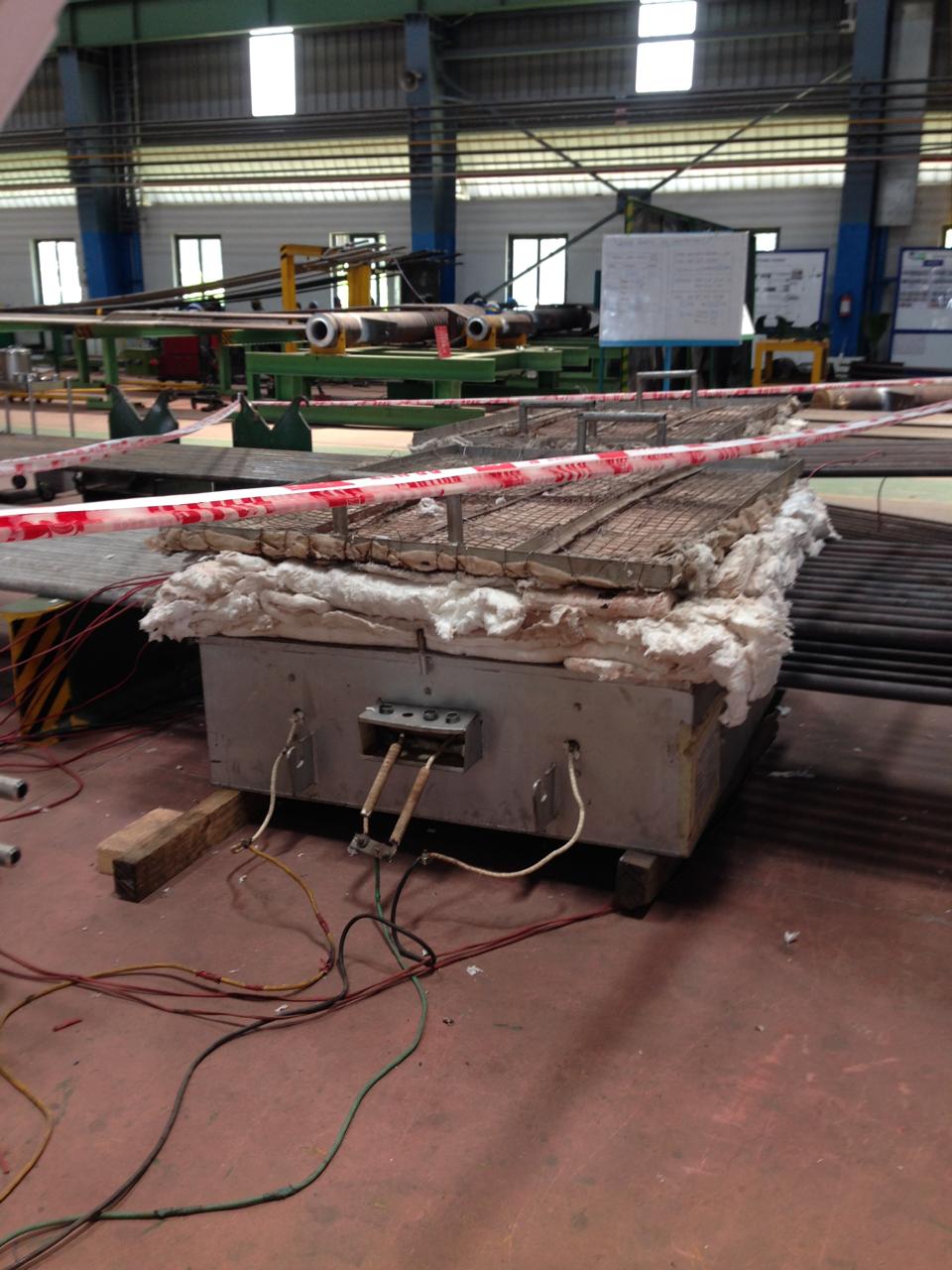
Overview
The heat treatment of specialty welded steel components using a portable furnace is a critical process to enhance mechanical properties, relieve residual stresses, and ensure compliance with engineering codes and service requirements. This method is particularly valuable for large, complex, or in-situ components where conventional furnace treatment is not feasible.
Specialty steels—such as carbon-molybdenum, chrome-molybdenum, or stainless steels—require precise thermal cycles tailored to their metallurgy to avoid detrimental effects like sensitization, hardening, or distortion.
Objectives of Heat Treatment
- Stress relief after welding or fabrication
- Tempering or normalizing specific alloy steels
- Restore toughness and ductility in the heat-affected zone (HAZ)
- Prevent cracking or delayed hydrogen embrittlement
- Achieve code compliance (e.g., ASME, AWS, API)
Portable Furnace Configuration
Portable furnaces are temporary, insulated enclosures built around the welded component. They are designed for localized or sectional heat treatment and are suitable for both shop and field conditions.
Components Include:
- Modular steel frame or refractory box
- High-temperature ceramic insulation
- Heating source:
- Electric resistance heaters (most common for precision)
- Diesel/gas burners (for large sections or remote areas)
- Thermocouples for temperature control and logging
- Temperature controllers and data acquisition systems
- Exhaust vents (for combustion systems)
Applicable Materials and Weld Types
| Material Type | Common Weld Types |
| Carbon Steel | Butt, fillet, socket welds |
| Low Alloy Steels (e.g. 1.25Cr-0.5Mo, 2.25Cr-1Mo) | Welded pressure parts, nozzles |
| Stainless Steels (e.g. 304, 316, 321) | High-purity or corrosion-resistant joints |
| Duplex & Super Duplex | Specialty offshore or chemical weldments |
Typical Heat Treatment Cycles
| Material | PWHT Temperature (°C) | Soak Time | Notes |
| Carbon Steel | 590–650 | 1 hr per 25 mm thickness | Avoid overheating |
| 1.25Cr-0.5Mo | 650–700 | Same as above | Slow heating/cooling required |
| 2.25Cr-1Mo | 680–740 | Same as above | Requires inerting for oxidation control |
| Austenitic Stainless | 750–850 (if required) | As specified | Often not required unless sensitized |
Heating and cooling rates are generally limited to ≤100–200 °C/hr, depending on thickness and material.
Procedure Summary
- Pre-treatment Inspection: Check weld quality, surface condition, and cleanliness.
- Setup Portable Furnace: Build insulated enclosure; install heaters and thermocouples.
- Heat-Up: Controlled rate per specification.
- Soak/Hold: Maintain temperature per code requirement and material thickness.
- Cooling: Controlled cooling under insulation until below 300 °C, then air cooling.
- Post-treatment Inspection: Verify temperature logs, inspect for signs of cracking or distortion.
Advantages
- On-site application minimizes downtime
- Customizable for complex geometries and large components
- Code-compliant treatment with full temperature control and documentation
- Lower cost and logistics burden than full furnace transport
Limitations
- Requires skilled personnel and proper instrumentation
- Environmental conditions (wind, rain) may affect uniformity
- Must ensure uniform heating to avoid distortion or incomplete stress relief
- Not suitable for components requiring full-body normalization or quenching
Documentation and Quality Control
- Thermal cycle records (time-temperature graphs)
- Calibration certificates for instruments
- PWHT Procedure Specification approved by QA/QC
- Third-party or client witness and endorsement, as per contract
Conclusion
Portable furnace heat treatment of specialty welded steel components is an effective and code-compliant method to achieve desired mechanical properties, especially in field environments. When correctly implemented, it ensures reliable performance of welded assemblies while minimizing disruption to operations.
